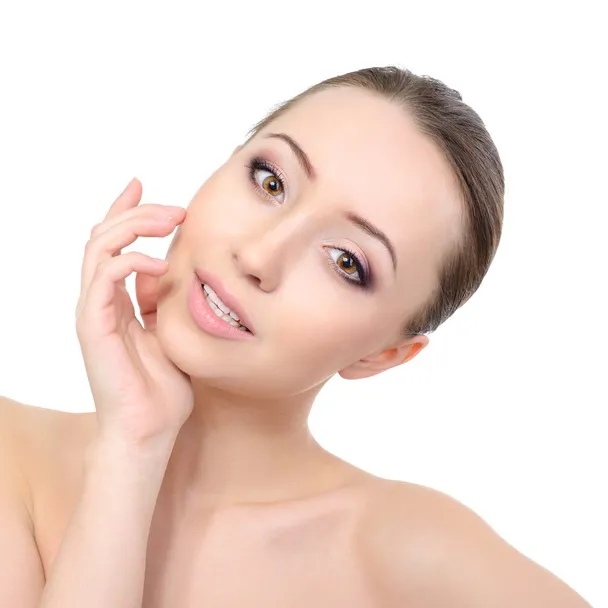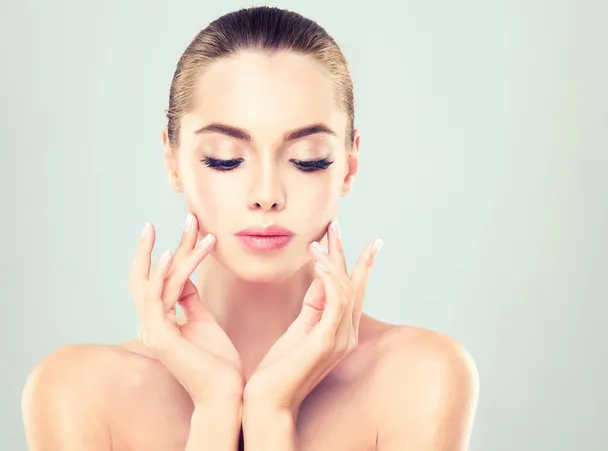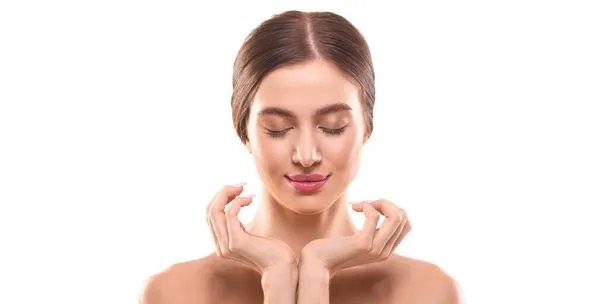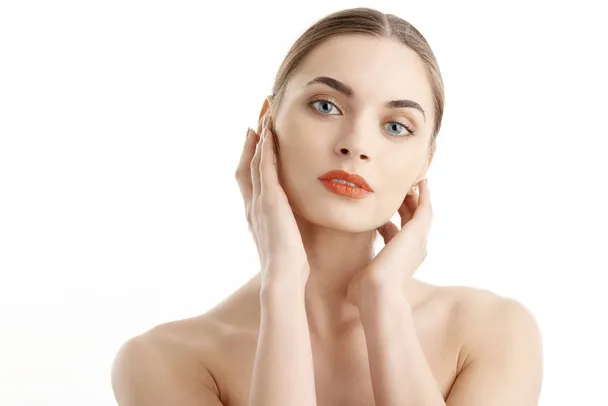A Beginner’s Guide to Applying Eyeshadow
Eyeshadow application is a fundamental skill in the world of makeup, capable of transforming your look from subtle to dramatic with just a few swipes of color. For beginners dipping their toes into the vast sea of cosmetics, mastering the art of eyeshadow can seem daunting. But fear not! With a little guidance and practice, anyone can become an eyeshadow aficionado. Let’s delve into a beginner’s guide to applying eyeshadow.
Prepare Your Canvas:
Preparing your canvas is the first and most crucial step in the eyeshadow application process. Just like an artist primes their canvas before painting, prepping your eyelids sets the stage for a flawless and long-lasting eyeshadow look. This step is essential for ensuring that your eyeshadow adheres smoothly, blends seamlessly, and stays vibrant throughout the day or night.
To begin, start by cleansing your eyelids to remove any traces of makeup, oil, or debris. This ensures a clean canvas for your eyeshadow application and prevents any potential product buildup or creasing. Once your eyelids are clean and dry, it’s time to apply your chosen eyeshadow primer or concealer.
Eyeshadow primer serves as the foundation for your eyeshadow, creating a smooth and even base that helps your eyeshadow adhere better and last longer. Additionally, primer helps to prevent creasing and fading, ensuring that your eyeshadow stays put throughout the day without smudging or smearing.
If you don’t have an eyeshadow primer on hand, you can also use a concealer or a dab of foundation to prime your eyelids. Simply apply a small amount of product to the eyelids and blend it out evenly using a makeup sponge or your fingertips. This not only creates a base for your eyeshadow but also helps to even out any discoloration or imperfections on the eyelids, such as dark circles or redness.
One of the key benefits of using an eyeshadow primer or concealer is that it intensifies the pigmentation of your eyeshadow colors. By providing a smooth and uniform base, primer allows eyeshadows to appear more vibrant and true to color, making your eye makeup pop.
Once you’ve applied your eyeshadow primer or concealer, allow it to set for a few moments before proceeding with your eyeshadow application. This ensures that the product has fully adhered to the skin and creates a stable base for your eyeshadow.
Gather Your Tools: Gathering the right tools is paramount for achieving a flawless eyeshadow application. Just as a painter relies on quality brushes to create a masterpiece, a makeup enthusiast requires the proper tools to achieve stunning eye looks. Investing in a set of quality eyeshadow brushes is essential for mastering various techniques and achieving professional-level results. Here’s a breakdown of the must-have brushes for your eyeshadow arsenal:
- Fluffy Blending Brush: A fluffy blending brush is the workhorse of any eyeshadow collection. This soft, dome-shaped brush is designed to seamlessly blend eyeshadow colors together, creating a smooth and gradient effect. The fluffy bristles allow for effortless blending and diffusing of harsh lines, making it ideal for applying transition shades and blending out crease colors. Look for a brush with densely packed yet flexible bristles for optimal blending performance.
- Flat Shader Brush: A flat shader brush is essential for packing eyeshadow onto the eyelids with precision and intensity. This brush features a flat, dense shape that allows for maximum color payoff and coverage. Use the flat shader brush to apply eyeshadow to the eyelid, patting the color onto the skin for a vibrant and opaque finish. This brush is perfect for applying shimmer or metallic eyeshadows, as it helps to enhance the reflective properties of the pigments.
- Small Detail Brush: A small detail brush is indispensable for achieving intricate and precise eyeshadow looks. This brush typically has a small, tapered tip that allows for precise application of eyeshadow to specific areas of the eye, such as the inner corner, lower lash line, or outer V. Use the detail brush to add depth and dimension to your eye makeup or to create intricate eyeliner looks with eyeshadow. Look for a brush with firm yet flexible bristles for optimal control and precision.
In addition to these three essential brushes, consider adding a few other versatile brushes to your collection, such as a angled brush for applying eyeshadow as eyeliner, a pencil brush for smudging and blending eyeshadow along the lash line, and a fluffy crease brush for adding definition to the crease area. With the right tools at your disposal, you’ll be well-equipped to tackle any eyeshadow look with confidence and precision.
When shopping for eyeshadow brushes, prioritize quality over quantity. Opt for brushes made from soft, synthetic bristles that are gentle on the delicate eye area and provide seamless blending and application. Investing in a set of high-quality brushes may require a higher upfront cost, but the payoff in terms of performance and longevity is well worth it. With proper care and maintenance, quality eyeshadow brushes can last for years and elevate your makeup game to new heights.
Choose Your Colors: Selecting the right eyeshadow colors is a crucial step in creating stunning eye makeup looks. With a vast array of shades and finishes available, choosing the perfect colors can seem overwhelming, especially for beginners. However, by starting with a versatile palette of neutral eyeshadows, you can build a solid foundation for exploring different makeup looks and experimenting with color. Here’s why neutral eyeshadow palettes are ideal for beginners:
- Versatility: Neutral eyeshadow palettes contain a range of versatile shades that are suitable for a variety of occasions and skin tones. From soft beige and taupe shades to rich browns and deep blacks, these palettes offer endless possibilities for creating both subtle and dramatic looks. Whether you’re heading to the office, attending a special event, or simply running errands, neutral eyeshadows provide the flexibility to adapt your makeup to any situation.
- Foolproof Application: Neutral eyeshadows are beginner-friendly, making them perfect for those who are new to makeup or still refining their skills. Unlike bold and vibrant colors, which can be challenging to work with, neutral shades are forgiving and easy to blend. With a neutral eyeshadow palette, you can experiment with different techniques, such as transition shades, lid colors, and crease definition, without the fear of making mistakes.
- Everyday Wear: Neutral eyeshadows are ideal for creating everyday makeup looks that enhance your natural beauty without appearing too heavy or dramatic. Whether you prefer a subtle wash of color for a fresh-faced appearance or a more defined eye contour for added dimension, neutral shades provide a polished and effortless look that’s suitable for daily wear. From simple matte finishes to shimmering metallics, neutral eyeshadows offer a range of textures and intensities to suit your preferences.
- Mix and Match: One of the greatest advantages of neutral eyeshadow palettes is their ability to be mixed and matched to create custom looks. By combining different shades and finishes, you can tailor your makeup to suit your mood, outfit, or the occasion. Experiment with layering lighter and darker shades, adding pops of shimmer or glitter, or blending multiple colors together to create unique and personalized eye looks that reflect your individual style.
Master the Basics:
Mastering the basics of eyeshadow application is essential for creating polished and professional-looking eye makeup looks. Whether you’re a beginner or an experienced makeup enthusiast, mastering the three-step method is a fundamental technique that lays the foundation for flawless eye looks. Here’s how to master the basics of eyeshadow application using the three-step method:
- Apply a Base Color: Start your eyeshadow journey by applying a light shade all over the eyelid as a base color. This step helps to even out the skin tone on the eyelids and creates a smooth canvas for blending other eyeshadow colors. Choose a neutral shade that complements your skin tone, such as beige, ivory, or soft peach. Using a fluffy eyeshadow brush, sweep the base color across the entire eyelid, from the lash line to the brow bone, using gentle back-and-forth motions.
- Define the Crease: Next, use a slightly darker shade to define the crease and add depth to the eyes. The crease is the natural fold above the eyelid, and defining it helps to create dimension and shape. Choose a shade that is one or two shades darker than your base color, such as taupe, medium brown, or mauve. Using a smaller, tapered blending brush, apply the crease color to the crease area, focusing on the outer half of the eyelid and blending it upward and outward toward the brow bone. Use windshield wiper motions to blend the color seamlessly into the skin, creating a soft transition between the base color and the crease shade.
- Add Dimension and Drama: To add dimension and drama to your eyeshadow look, apply a shimmery or darker shade to the outer corner of the eye. This step helps to create depth and definition, making the eyes appear larger and more prominent. Choose a shade that contrasts with the crease color, such as a deep bronze, plum, or charcoal. Using a small shader brush or angled brush, apply the outer corner shade to the outer V of the eyelid, focusing on the outermost corner of the eye and blending it into the crease color. This creates a gradient effect that adds dimension and drama to the eyes, making them appear more sculpted and defined.
Blend, Blend, Blend: Blending is the secret sauce to achieving a flawless eyeshadow look that seamlessly melds colors together for a soft, gradient effect. Whether you’re a makeup novice or a seasoned pro, mastering the art of blending is essential for creating professional-looking eye makeup. Here’s why blending is crucial and how to do it effectively:
- Seamless Transitions: Blending helps to create seamless transitions between different eyeshadow colors, ensuring that there are no harsh lines or stark contrasts. By gently diffusing the edges of each shade, blending creates a soft, gradient effect that enhances the overall appearance of your eye makeup. This technique is particularly important when using multiple eyeshadow colors to create dimension and depth on the eyelids.
- Professional Finish: Blending elevates your eye makeup from amateur to professional status by creating a polished and cohesive look. A well-blended eyeshadow look appears seamless and effortless, with colors seamlessly melting into one another for a natural yet defined finish. Whether you’re going for a subtle daytime look or a dramatic evening ensemble, blending is the key to achieving a professional-quality result.
- Eliminate Harsh Lines: One of the primary goals of blending is to eliminate harsh lines and edges between eyeshadow colors. These harsh lines can detract from the overall appearance of your eye makeup, making it look patchy or uneven. By blending the edges of each shade with a clean blending brush, you can soften harsh lines and create a smooth transition between colors for a more polished finish.
Now, let’s talk about how to blend effectively:
- Use a Clean Blending Brush: Start by using a clean blending brush to blend out the edges of your eyeshadow colors. A fluffy blending brush with soft, tapered bristles is ideal for this task, as it allows for seamless blending without disturbing the pigmentation of the eyeshadows. Make sure to clean your blending brush regularly to prevent the buildup of product and bacteria.
- Circular Motions: When blending eyeshadow, use gentle circular motions to blend the colors together. Begin at the outer edges of the eyeshadow and work your way inward, using light pressure and circular motions to soften harsh lines and meld the colors together. This technique helps to create a smooth, gradient effect that appears seamless and natural.
- Windshield Wiper Motions: In addition to circular motions, windshield wiper motions are another effective blending technique. Hold your blending brush horizontally and use back-and-forth motions along the crease or transition area to blend the colors together. This technique helps to distribute the eyeshadow evenly and create a soft, diffused effect.
Experiment and Have Fun:
Experimenting with different eyeshadow colors, finishes, and techniques is one of the most enjoyable aspects of makeup application. It allows you to express your creativity, enhance your features, and have fun with your look. Whether you’re a makeup enthusiast or just starting to explore the world of eyeshadow, embracing experimentation can lead to exciting discoveries and stunning makeup looks. Here’s why experimenting with eyeshadow is essential and how to make the most of it:
- Discover Your Signature Style: Experimenting with eyeshadow allows you to discover your signature style and express your unique personality through makeup. Whether you gravitate towards soft, romantic looks with pastel hues or bold, edgy looks with vibrant colors, experimenting helps you find what resonates with you and makes you feel confident and beautiful. By trying out different colors, finishes, and techniques, you can uncover new favorites and create a makeup style that is uniquely yours.
- Expand Your Makeup Skills: Trying out new eyeshadow colors and techniques is a great way to expand your makeup skills and become more proficient at application. Whether you’re mastering the art of blending, perfecting a winged eyeliner, or experimenting with cut crease techniques, each new experiment presents an opportunity to learn and grow as a makeup artist. Don’t be afraid to step out of your comfort zone and challenge yourself with new looks – you might be surprised at what you can achieve!
- Boost Your Confidence: Experimenting with eyeshadow can boost your confidence and empower you to express yourself creatively. Stepping outside of your makeup routine and trying something new can be exhilarating, and it’s a great way to break out of a beauty rut and refresh your look. Whether you’re experimenting with bold colors, intricate designs, or unconventional techniques, embracing experimentation can help you feel more confident and self-assured in your makeup skills.
- Have Fun and Enjoy the Process: Above all, experimenting with eyeshadow should be fun and enjoyable! Don’t be afraid to play with color, mix and match different shades, and get creative with your looks. Makeup is a form of self-expression, and there are no rules when it comes to creativity. Whether you’re spending a leisurely afternoon playing with makeup or getting ready for a special occasion, embrace the process and enjoy the journey of self-discovery through makeup.
Clean Up Any Fallout:
Cleaning up any fallout is a crucial step to achieving a crisp and polished eyeshadow look. Fallout can occur when excess eyeshadow powder falls onto the cheeks during application, detracting from the overall appearance of your makeup. Fortunately, there’s a simple solution to this common problem: using a makeup wipe or cotton swab dipped in makeup remover to gently erase any stray eyeshadow particles. Here’s how to clean up fallout like a pro:
- Assess the Fallout: After applying your eyeshadow, take a moment to assess whether any fallout has occurred. Fallout typically appears as small specks of eyeshadow powder on the cheeks or under the eyes. It’s essential to address fallout promptly to prevent it from smudging or spreading further.
- Grab a Makeup Wipe or Cotton Swab: To clean up fallout, reach for a makeup wipe or cotton swab dipped in makeup remover. Both options are effective for gently removing stray eyeshadow particles without disturbing the rest of your makeup.
- Gently Erase Stray Eyeshadow: If you’re using a makeup wipe, fold it in half and lightly swipe it over the areas where fallout is present. Use gentle, downward motions to lift away the excess eyeshadow powder without smudging your foundation or concealer. Alternatively, if you’re using a cotton swab dipped in makeup remover, lightly dab it onto the affected areas to dissolve and lift away the fallout.
- Be Precise and Detail-Oriented: When cleaning up fallout, be precise and detail-oriented to ensure a clean and polished finish. Pay close attention to the areas where fallout is most concentrated, such as the outer corners of the eyes or the lower lash line. Take your time and use gentle, controlled movements to avoid disrupting the rest of your makeup.
- Finish with Touch-Ups: After cleaning up fallout, assess your makeup to see if any touch-ups are needed. If necessary, reapply foundation or concealer to any areas where makeup may have been removed during the cleanup process. Use a blending sponge or makeup brush to seamlessly blend any touch-ups for a flawless finish.
In conclusion, mastering the art of eyeshadow application is a journey that requires patience, practice, and a willingness to experiment. By following these beginner-friendly tips and techniques, you’ll be well on your way to creating stunning eye looks that showcase your unique style and personality. So grab your brushes, unleash your creativity, and let your eyes be the canvas for your artistic expression!










